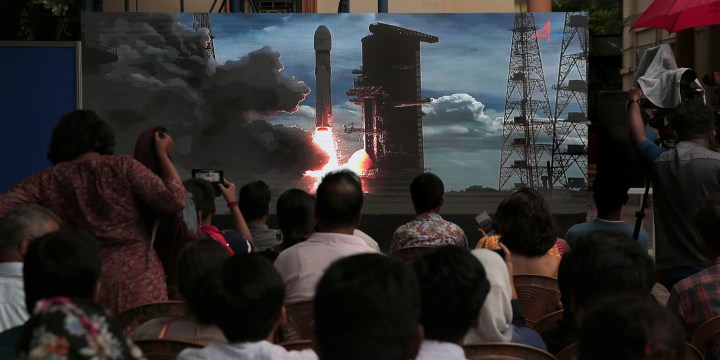BUSINESS REFLECTION
After the Bell: Watch this space … race

The thriftiness of the Indian space programme was really underlined in 2014 when the price tag for India’s first Mars orbiter came in lower than the cost of the 2015 movie blockbuster, ‘The Martian’.
At the BRICS Summit last week, two significant events took place involving member countries. Was it just a coincidence? Or was it — cue the spacy music — deliberate? Woowoowoowoo.
The first was the plane crash of Wagner boss Yevgeny Prigozhin, which smacked suspiciously of a message to other potential Russian plotters. Not only was Prigozhin on the plane, but so was Wagner group commander Dmitry Utkin. Russian President Vladimir Putin has denied he ordered the assassination of Prigozhin, but interestingly, Wagner fighters all over Africa will now have to sign an oath of allegiance to the Russian state. How convenient. And what a coincidence!
The other contemporaneous event was very different, but equally significant: India’s Chandrayaan-3 successfully landed a lunar module near the Moon’s south pole. India is now only the fourth country to land a craft on the lunar surface.
Amazing that it happened while Indian Prime Minister Narendra Modi was at the BRICS conference. And how ironic, since a Russian attempt to land at the lunar south pole recently failed. What a coincidence!
But actually, the importance of the landing only starts there. The real noteworthiness of the effort was its frugality. Getting Chandrayaan-3 up to the Moon and the module, called Vikram, down on to the Moon’s surface, cost around $70-million.
Compared to what all the other countries that have made it to the Moon have forked out, this is chicken feed. The Wall Street Journal reported that last year, the US government funded Nasa with $24-billion and in total spent $69-billion on its space programme. India’s total space budget is $1.3-billion.
The thriftiness of the Indian space programme was really underlined in 2014 when the price tag for India’s first Mars orbiter came in lower than the cost of the 2015 movie blockbuster The Martian.
India achieves this frugality partly, one suspects, to defray the possible criticism that the space programme is an expensive scientific hobby contributing little to human development in a country with a very high poverty rate. But the way the Indian space programme is unfolding is a bit of a financial marvel. Or, to put it another way, it’s a demonstration of just how governments of rich countries are being ripped off by the space agencies.
The Journal reported that the US spends around 0.28% of its GDP on its space programme, Russia 0.1%, France a bit less, and Japan a bit less than that. India spends less than 0.04% of its GDP on its space programme.
This cut-price space programme is not just a feature of India, of course. SpaceX’s CEO, Elon Musk, has been proselytising for years about reducing the cost of getting into space and has said on numerous occasions that the key to lower costs is rocket reusability.
Clearly, that’s part of it, but not the only part. At the moment, sending up a Falcon 9 rocket with an orbiting payload costs about $60-million — more or less the same as the Chandrayaan-3 effort.
But Musk claims — and these claims need to be taken with a pinch of salt — that launching the much larger Starship could eventually cost less than $10-million. The first Starship launch was a disaster, but this is space flight — there is an enormous amount to learn. And an enormous number of things that can go wrong.
But even now, the cost of getting into orbit is dropping like a stone. In 1995, the cost of the US space shuttle was about $26,000/kilogram. The current cost of a Falcon 9 low Earth orbit launch is now around $2,700/kg — almost 10 times less.
Consequently, the number of satellite launches is increasing. There were 86 spaceflight launches last year, which is more or less the historical average. But there were 57 in just the first half of 2023. Clearly, we need to watch this space. DM




















 Become an Insider
Become an Insider
Comments - Please login in order to comment.